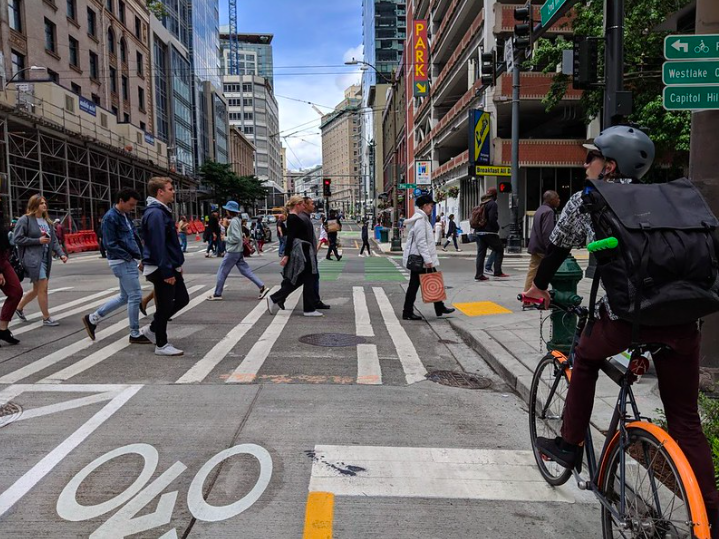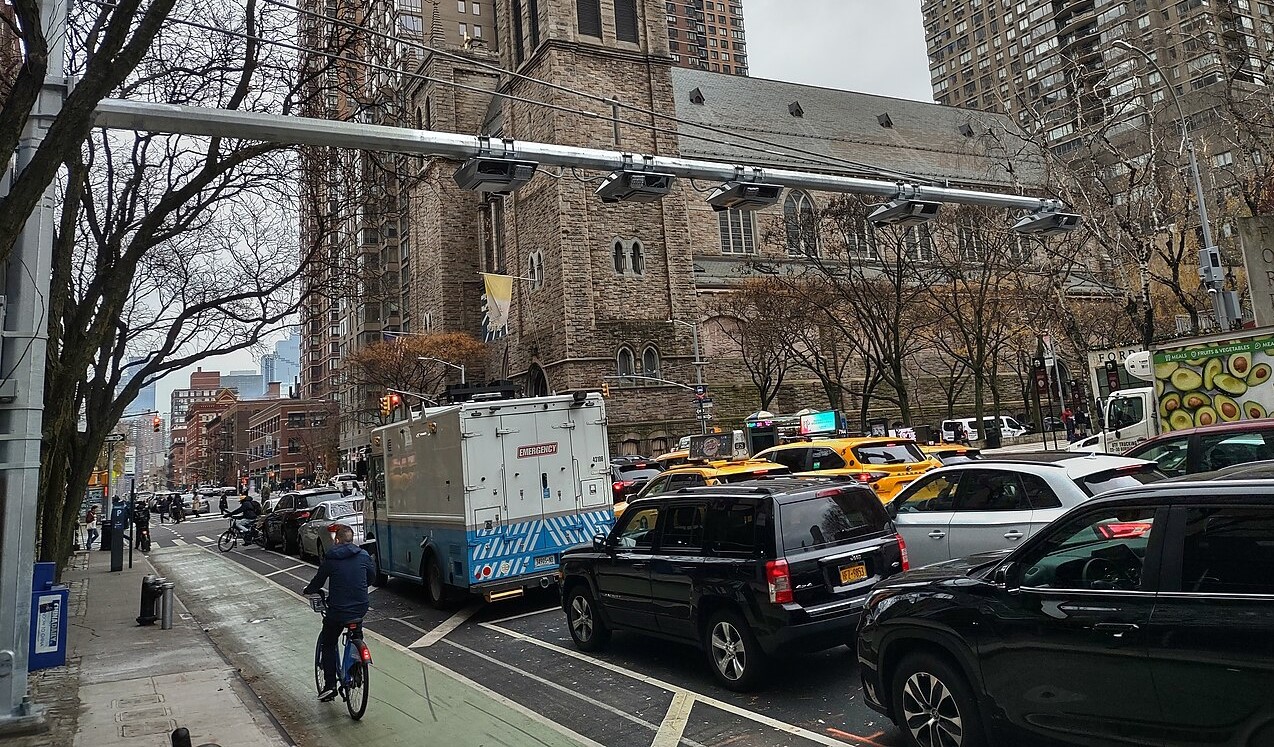Take a seat — no, really.
A new study from the Seattle Department of Transportation shows that the vast majority of sidewalk users do not take advantage of city-provided seating, preferring standing (61 percent) or simply leaning on walls or using makeshift chairs (11 percent).
"Surveyors found that only one-in-four people who hung out on public sidewalks actually sat in seating provided either for the public or restaurant patrons," Seattle DOT noted, adding that the agency is not sure whether pedestrians prefer to stand or simply whether there's just not enough seating available.
That's just the top line in a curious report that shows pedestrian behavior on sidewalks includes much more than merely getting from Point A to Point B. At least in Seattle, walkers engage in a surprisingly varied range behavior — social, commercial, and resting — on the city's sidewalks.
Among the other findings:
- About 10 percent of sidewalk users linger for a relatively long period of time — either to wait for transit or to check their phones. These are the people who are rarely using street furniture.
- The sidewalk is a great meeting place. Of the people who stopped and lingered, the largest group — 56 percent — were either in a group or one-on-one conversation.
- About a quarter of the lingerers were participating in commercial activity, like waiting line at a food vendor or dining in an outdoor cafe setting. It's a reminder to businesses that customers are literally right outside the door, but also a reminder that city DOTs play an important role in stimulating commerce: "This really shows the importance of sidewalks and public spaces that facilitate these types of neighboring businesses," the agency said. "#ShopLocal."
The study is the result of volunteers watching people's behaviors on sidewalks on "108 block faces across 38 Seattle neighborhoods" at all different times of day and week.
Seattle DOT plans to use the information to help make the city's public spaces engaging and help support local businesses, "possibly leading to more seating, larger spaces to congregate, or working with an adjacent landowner to engage with the street more," the agency reports.
Or not.
"We can identify areas where public seating is woefully needed, and yes, we can rule out placing additional seating in places where people just aren’t down for relaxing on public seats," the agency added.






